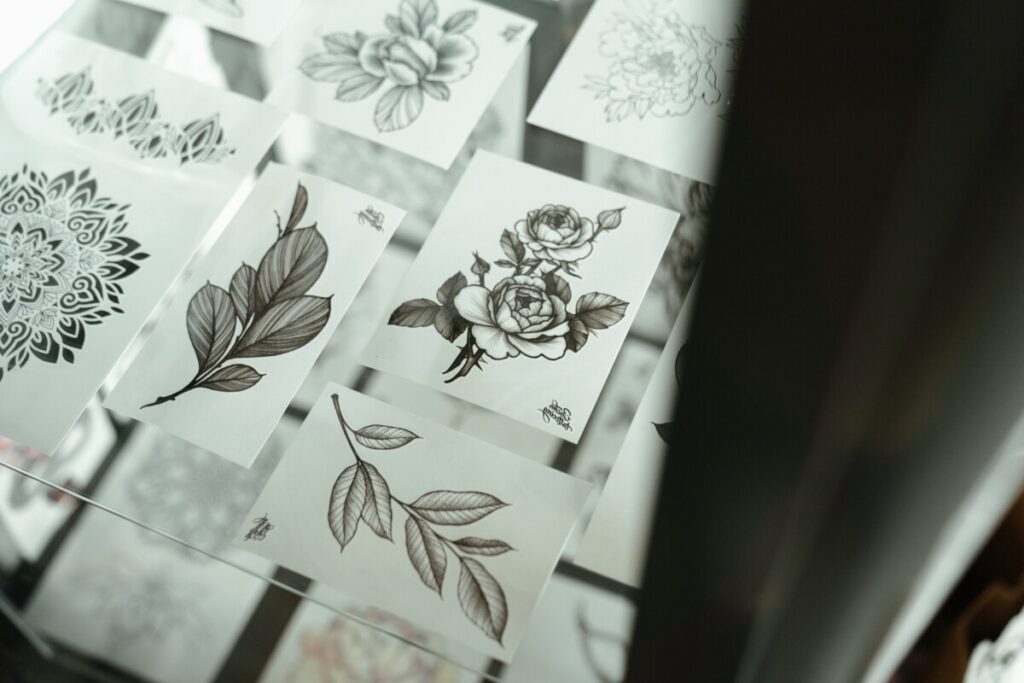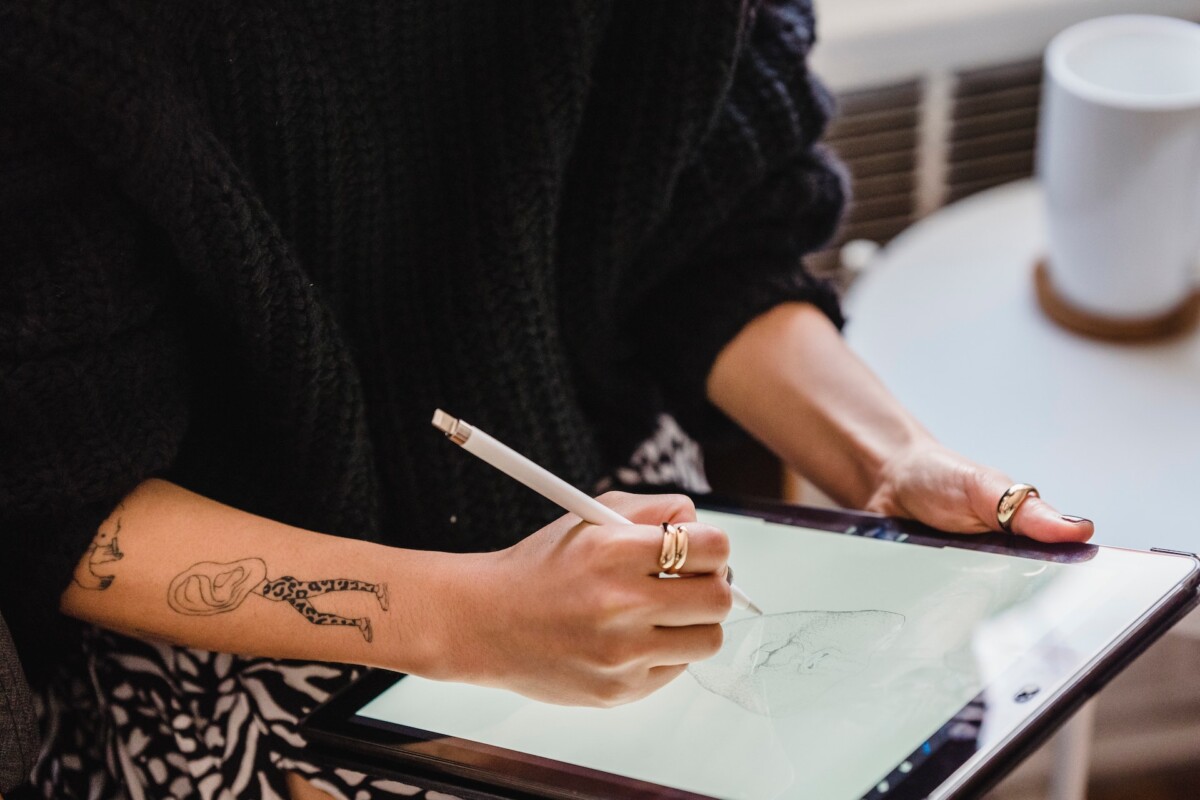Many assume graphic design and tattoo artistry inhabit separate worlds. They’re wrong. In fact, these two art forms share more than you’d think. Let’s dive into the intriguing connection between them.
Graphic designers usually work on digital platforms or paper. Tattoo artists, on the other hand, use the human skin as their canvas. Despite this difference, the principles of line, form, and color apply to both.
Both mediums require a deep understanding of their particular intricacies; paper and digital screens offer a vast space for modification, whereas skin, being a living tissue, leaves no room for error.
The Tools: From Sketch to Ink
Both graphic designers and tattoo artists start with a simple sketch. Graphic designers use digital tools like Adobe Illustrator to refine these sketches. Tattoo artists use tattoo machines to bring their designs to life. While the devices differ, the artistic process remains eerily similar. For example, graphic designers use stylus pens for precise drawing, just as tattoo artists employ fine needles for intricate details.
The Craft: Mastery of Lines and Curves
Both art forms employ lines and curves to create distinct shapes and forms. A simple stroke in a software like Photoshop can birth an iconic logo for graphic designers. For tattoo artists, a series of meticulous lines and shades result in a lifetime masterpiece. The skill sets required to master lines and curves are interchangeable between these two professions. After all, a shaky line spells disaster, whether it’s on a digital screen or human skin.
The Psychology of Colors
Colors are more than mere decorations. They serve a psychological function. Graphic designers carefully pick colors that evoke specific emotions or prompt actions. Green, for example, often connotes health or sustainability. Likewise, the choice of ink color in tattoos is far from random. A red tattoo might symbolize love or passion, while a blue one could signify calm and serenity. In both fields, understanding the psychology of colors is paramount.
The Message: Visual Storytelling
The ultimate aim of both graphic design and tattoo art is to tell a story. Graphic designers may use images, text, and layout to convey a brand’s values and message. Tattoo artists, on the other hand, craft narratives through symbols, words, and intricate artwork. Some people wear tattoos that are literal illustrations of life events, just as certain logos are designed to be emblematic of a company’s mission.

Adaptation: Constant Evolution
A fascinating aspect of these fields is their adaptability and responsiveness to trends. What’s in vogue in graphic design, such as minimalism or a vintage look, often seeps into the tattoo world. Conversely, rising tattoo trends, like geometric patterns or watercolor styles, can influence graphic design. Both professions keep tabs on popular culture, technology, and societal shifts. As society changes, so do they, making them ever-evolving and incredibly dynamic.
Text vs. Visual Elements
In graphic design, text often works in tandem with visual elements to communicate a message. Fonts, letter-spacing, and text placement are crucial. Similarly, tattoo artists sometimes incorporate text into their designs, choosing fonts and placements that harmonize with the artwork. The blend of textual and visual elements serves to reinforce the story or message in both art forms.
Client Interaction and Personalization
One of the unique overlaps between graphic design and tattoo artistry is the element of personalization. Graphic designers often customize templates to align with a client’s brand image. Tattoo artists, too, tweak standard designs to fit an individual’s persona or preference. The interaction with clients, understanding their needs, and personalizing the artwork are common threads that run through both professions.
In sum, it’s more than apparent that graphic design and tattoo artistry share multiple layers of connection, from the mediums and tools they employ to the messages they seek to convey. Far from existing in isolated spheres, these art forms enrich each other in myriad ways, offering a comprehensive landscape where creativity knows no bounds. If you ever find yourself in Bali and are looking for the best tattoo in Canggu, you’ll notice how these worlds seamlessly blend on your skin.






